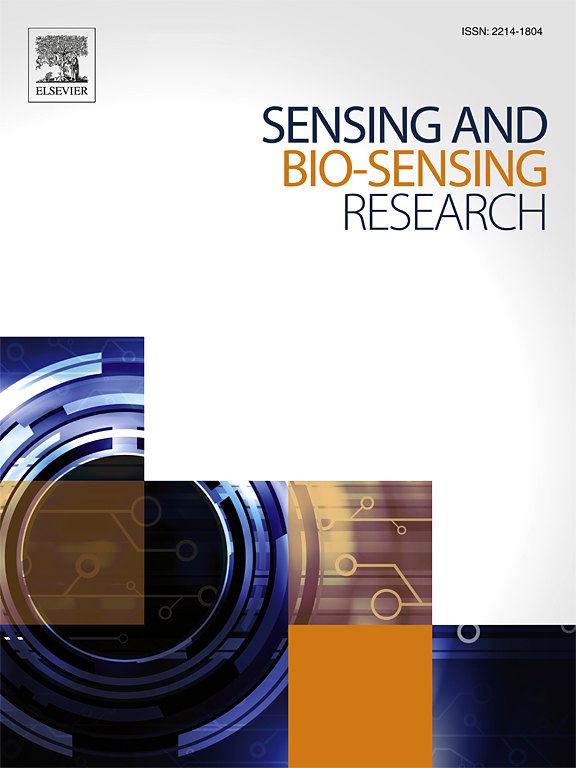Adaptive resolution in speckle displacement measurement using optimized grid-based phase correlation and statistical refinement
IF 4.9
Q1 CHEMISTRY, ANALYTICAL
引用次数: 0
Abstract
Speckle metrology is a powerful optical sensing tool for non-destructive testing (NDT) and advanced surface characterization, enabling ultra-precise measurements of surface deformations and displacements. These capabilities are critical for material analysis and surface assessment in sensing-driven applications. However, traditional correlation methods often struggle to balance resolution and robustness, particularly when simultaneously measuring both small- and large-scale deformations in noisy, high-frequency data environments. In this paper, we present an adaptive resolution approach for speckle displacement measurement that combines grid-based phase correlation with statistical refinement for enhanced accuracy and resolution.
Unlike traditional phase correlation techniques that rely on global correlation, our method introduces a flexible grid-based framework with localized correlation and dynamic overlap adjustments. To improve measurement performance, we developed an optimization technique that uses the median absolute deviation of residuals between reference and deformed images, enabling the algorithm to automatically adapt grid sizes based on local deformation characteristics. This allows it to handle both small- and large-scale deformations simultaneously and effectively. The approach resulted in a relative error reduction of up to 14 % compared to the best of the results obtained using a manually fixed grid size.
The proposed sensing methodology is validated through a series of numerical simulations and experimental studies, including controlled deformations with a micrometer translation stage and random speckle displacements on water-sprayed surfaces. Results demonstrate that our method can accurately detect both known and unknown deformations with high accuracy and precision, outperforming traditional techniques in terms of adaptability and robustness, particularly for surface deformation analysis.
基于优化网格相位相关和统计细化的散斑位移测量自适应分辨率
散斑测量是一种强大的光学传感工具,用于无损检测(NDT)和先进的表面表征,可以超精确地测量表面变形和位移。这些能力对于传感驱动应用中的材料分析和表面评估至关重要。然而,传统的相关方法往往难以平衡分辨率和鲁棒性,特别是在嘈杂的高频数据环境中同时测量小尺寸和大尺寸变形时。在本文中,我们提出了一种用于散斑位移测量的自适应分辨率方法,该方法将基于网格的相位相关与统计细化相结合,以提高精度和分辨率。与传统的依赖全局相关的相位相关技术不同,我们的方法引入了一个灵活的基于网格的框架,具有局部相关和动态重叠调整。为了提高测量性能,我们开发了一种优化技术,该技术使用参考图像和变形图像之间残差的中位数绝对偏差,使算法能够根据局部变形特征自动适应网格大小。这使得它可以同时有效地处理小型和大型变形。与使用手动固定网格大小获得的最佳结果相比,该方法的相对误差减少了14%。通过一系列数值模拟和实验研究验证了所提出的传感方法,包括具有微米平移阶段的控制变形和水喷涂表面的随机散斑位移。结果表明,该方法可以准确地检测已知和未知变形,具有较高的精度和精度,在适应性和鲁棒性方面优于传统技术,特别是在表面变形分析方面。
本文章由计算机程序翻译,如有差异,请以英文原文为准。
求助全文
约1分钟内获得全文
求助全文
来源期刊

Sensing and Bio-Sensing Research
Engineering-Electrical and Electronic Engineering
CiteScore
10.70
自引率
3.80%
发文量
68
审稿时长
87 days
期刊介绍:
Sensing and Bio-Sensing Research is an open access journal dedicated to the research, design, development, and application of bio-sensing and sensing technologies. The editors will accept research papers, reviews, field trials, and validation studies that are of significant relevance. These submissions should describe new concepts, enhance understanding of the field, or offer insights into the practical application, manufacturing, and commercialization of bio-sensing and sensing technologies.
The journal covers a wide range of topics, including sensing principles and mechanisms, new materials development for transducers and recognition components, fabrication technology, and various types of sensors such as optical, electrochemical, mass-sensitive, gas, biosensors, and more. It also includes environmental, process control, and biomedical applications, signal processing, chemometrics, optoelectronic, mechanical, thermal, and magnetic sensors, as well as interface electronics. Additionally, it covers sensor systems and applications, µTAS (Micro Total Analysis Systems), development of solid-state devices for transducing physical signals, and analytical devices incorporating biological materials.
 求助内容:
求助内容: 应助结果提醒方式:
应助结果提醒方式:


